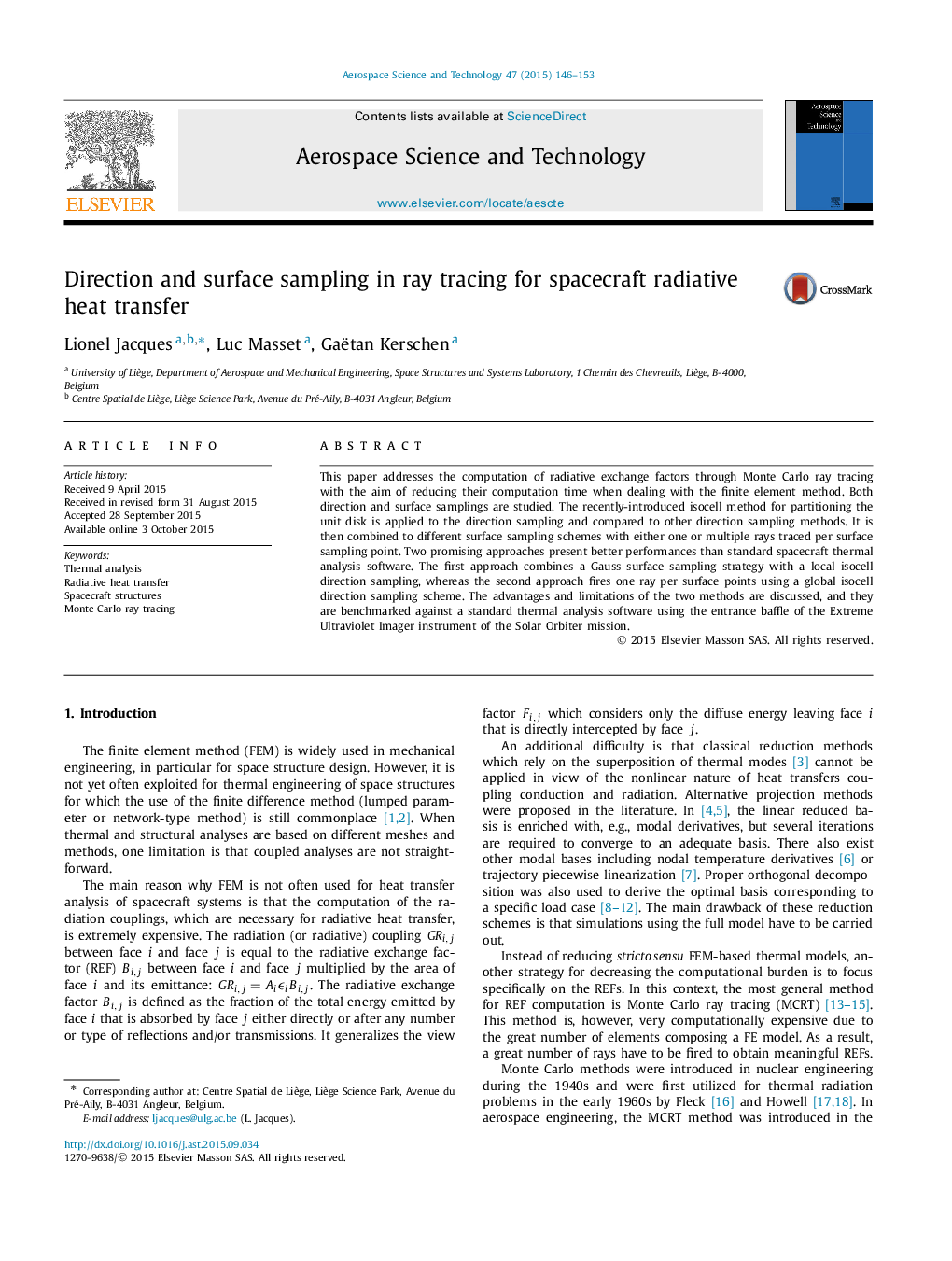| Article ID | Journal | Published Year | Pages | File Type |
|---|---|---|---|---|
| 8058702 | Aerospace Science and Technology | 2015 | 8 Pages |
Abstract
This paper addresses the computation of radiative exchange factors through Monte Carlo ray tracing with the aim of reducing their computation time when dealing with the finite element method. Both direction and surface samplings are studied. The recently-introduced isocell method for partitioning the unit disk is applied to the direction sampling and compared to other direction sampling methods. It is then combined to different surface sampling schemes with either one or multiple rays traced per surface sampling point. Two promising approaches present better performances than standard spacecraft thermal analysis software. The first approach combines a Gauss surface sampling strategy with a local isocell direction sampling, whereas the second approach fires one ray per surface points using a global isocell direction sampling scheme. The advantages and limitations of the two methods are discussed, and they are benchmarked against a standard thermal analysis software using the entrance baffle of the Extreme Ultraviolet Imager instrument of the Solar Orbiter mission.
Related Topics
Physical Sciences and Engineering
Engineering
Aerospace Engineering
Authors
Lionel Jacques, Luc Masset, Gaëtan Kerschen,
